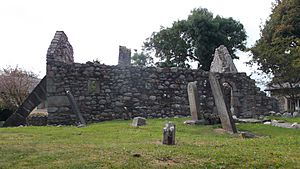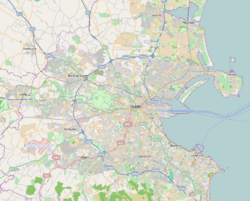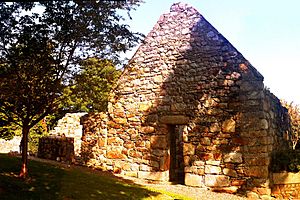Killiney Church facts for kids
Quick facts for kids Killiney Church |
|
|---|---|
| Nuns' Abbey | |
|
Cill Iníon Léinín
|
|
 |
|
| 53°15′17″N 6°06′59″W / 53.25472°N 6.11631°W | |
| Location | Marino Avenue West, Killiney, Dún Laoghaire–Rathdown |
| Country | Ireland |
| Denomination | Pre-Reformation Catholic |
| History | |
| Founded | 11th century |
| Architecture | |
| Style | Norman |
| Years built | 11th century |
| Specifications | |
| Length | 11.5 m (38 ft) |
| Width | 9 m (30 ft) |
| Administration | |
| Diocese | Dublin |
Killiney Church is a very old church located in County Dublin, Ireland. It has a long history, dating back many centuries.
Contents
Where is Killiney Church?
Killiney Church is found in a place called Killiney, in County Dublin, Ireland. It sits about 240 meters (about 787 feet) west of the coast. It is also about 1.6 kilometers (about 1 mile) south of Killiney Hill. Today, the church is surrounded by houses, close to Marino Avenue West.
A Look Back: The History of Killiney Church
Early Beginnings: A Monastery Site
Long, long ago, around the 6th or 7th century, there was a monastery on this very spot. The name of this ancient site was Cill Ingean Léinín. This means "Church of the Daughters of Léinín" in Irish.
Who Were the Daughters of Léinín?
The story tells of seven virgin sisters: Aiglenn, Macha, Luiden, Druiden, Luicill, Bimtach, and Briga. Briga is also known as the patron saint of Tully Church. Their brother was Colmán of Cloyne, a famous saint who lived from 530 to 606 AD. The sisters' special day was celebrated on March 6th.
When Was the Church Built?
The church building you see today was constructed in the 11th century. This makes it a very old and important historical site in Ireland.



